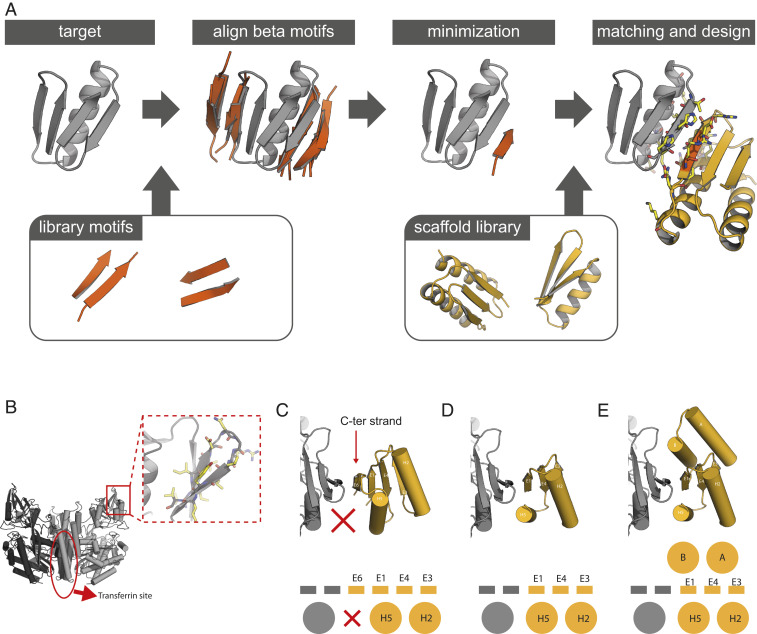Fig. 1.
Design of edge strand–mediated complexes. (A) Design pipeline. After detection of exposed edge strands, a library of two-stranded beta sheet motifs was used to generate a docked strand: one of the two strands in each motif are aligned to the edge strands such that the second strand in the motif forms nonclashing beta sheet hydrogen bonds with the target that was subsequently minimized to optimize the backbone hydrogen bonds. Scaffolds from an in silico library are then superimposed or grafted onto this strand and scaffold residues are optimized to make favorable interactions with the target through the interface strand and flanking helices. (B) The homodimeric human transferrin receptor ectodomain [PDB: 3kas (32)] contains an exposed edge strand in the apical domain (red box). (C) Full-length designed ferredoxins can be docked to hTfR via strand E6, but there is little packing between helix H5 and hTfR (red X). (D) Strategy 1: Removal of strand E6 and instead docking via strand E1 allows for better packing interactions between helix H5 and hTfR. (E) Strategy 2: Expansion of the truncated scaffolds with additional helices A and B allows for an even larger burial of surface area in the interface than in strategy 1.

